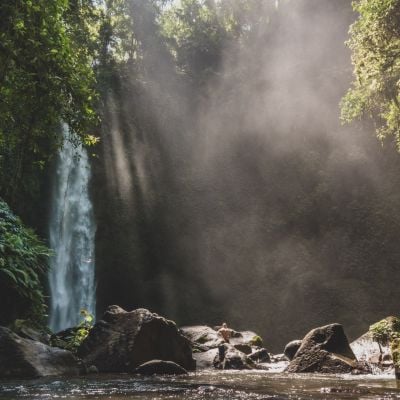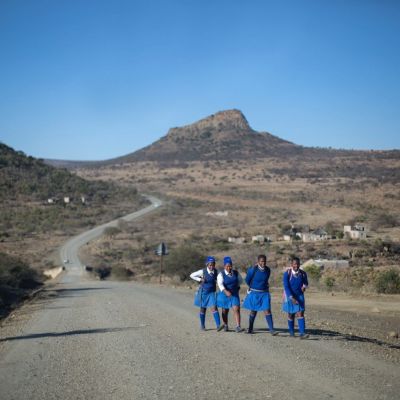Tale of the Tiger
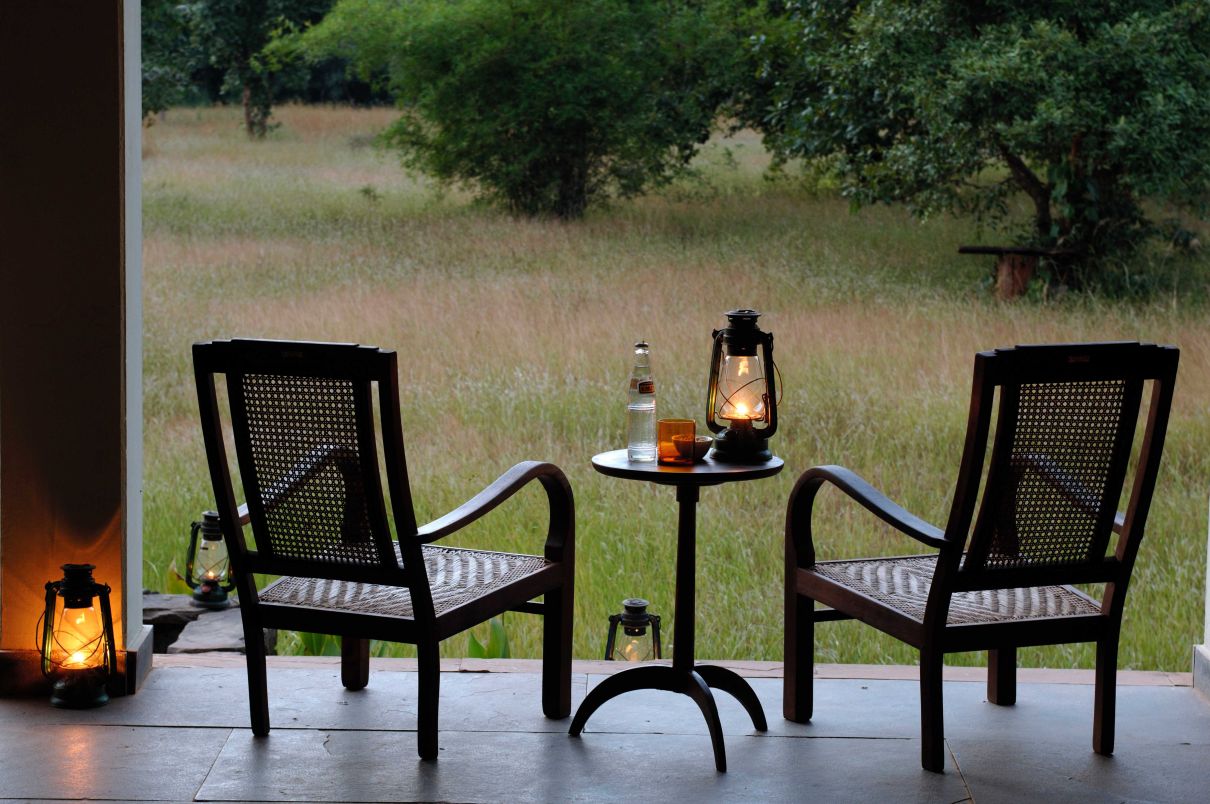
Tigers can play hard to get in Central India's National Parks but catching sight of one is an experience to treasure.
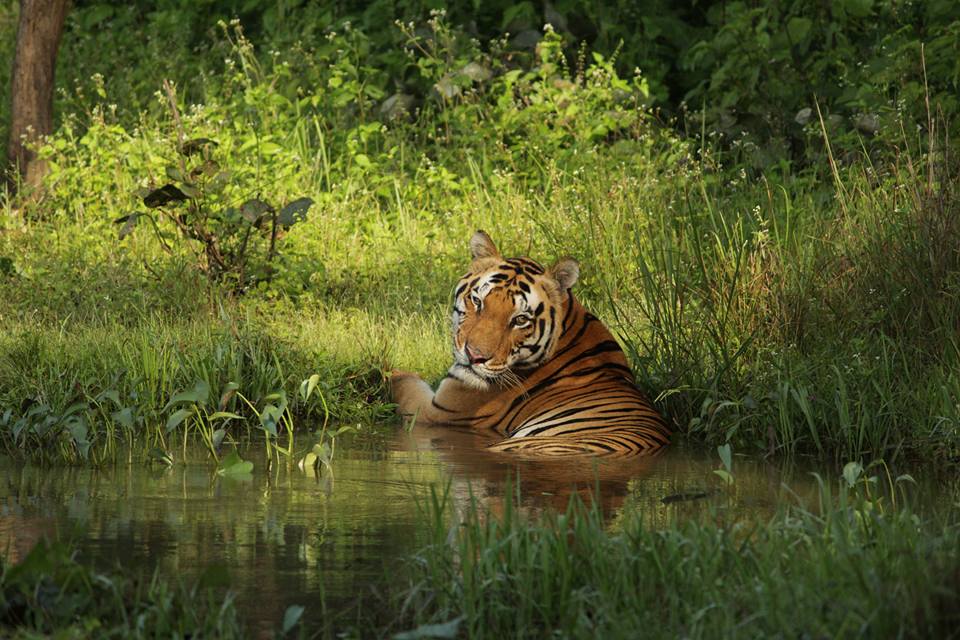
Tigers had become the elephant in the room. Well, on the jeep. Bandhavgarh National Park in central India is a Jungle Book fantasy land of tiger-filled forests, lakes and abandoned temples. But after 24 hours of searching for the world’s most-revered land predator, we were yet to see even a flash of burnt-orange stripe.
The animals terrorised by tigers had been out in force: spotted deer with bulging eyes glanced neurotically at every thicket; wild pig pirouetted across dirt roads in their speed to conceal themselves; and langur monkeys with wizened old-man faces perched just out of pouncing distance.
My guide, Raj Kishore, decided that we also needed to be astute when it came to dealing with the ‘king of the jungle’. Which is how I found myself standing next to an ice-cream-coloured temple just outside the park boundary, its garlands of jasmine blurred by gusts of dusty wind. I took off my shoes and walked up the stairs to this 1,000-year-old place of worship, which was guarded by a priest and a life-sized stone statue of a tiger. The former grinned toothlessly and gestured at me to kneel down.
According to legend, this Aslan-like statue has the power to flush out his flesh and blood descendants from the jungle, but only if you ask nicely. Tigers may have been worshipped for centuries, but they are elusive gods, opting for the privacy of the undergrowth over the flashy mid-savannah snoozing of the African lion. Demanding divine help seemed like a sensible solution to this ancient behavioural pattern, so I knelt in a heap of day-old hibiscus flowers and whispered in its ear.
The temple sits in one of the many villages that surround Bandhavgarh, and the dilapidated perimeter fence feels too close for comfort for man and beast. The proximity of humans to the world’s largest cat was captured movingly in the final episode of David Attenborough’s BBC documentary series Dynasties, which was filmed in Bandhavgarh over the course of two years and released in late 2018. In it, producer Theo Webb focused on superstar tigress Raj Bhera. She died last year, and her territory has been taken by Solo, her aggressive adult daughter, while two of her male cubs have fought for their own pieces of land deeper in the park.
“The unique thing about filming for Dynasties was that we got to spend so much time with one family,” said Theo, when we speak in the days before my trip. “This inevitably leads to feeling attached to the animals and wanting them to succeed. Raj Bhera was an extraordinary tigress. She allowed us to follow her journey of raising her cubs to adulthood and showed us the perils that tigers face in the modern world.”
India’s national parks are home to an estimated 2,226 tigers — more than half of the global population — and the rangers are doing a dazzling job of fighting off the irreversible tide of humanity outside the gates. But as tiger numbers grow, the highly territorial cats are being forced to enter human settlements, thereby putting themselves in mortal danger.
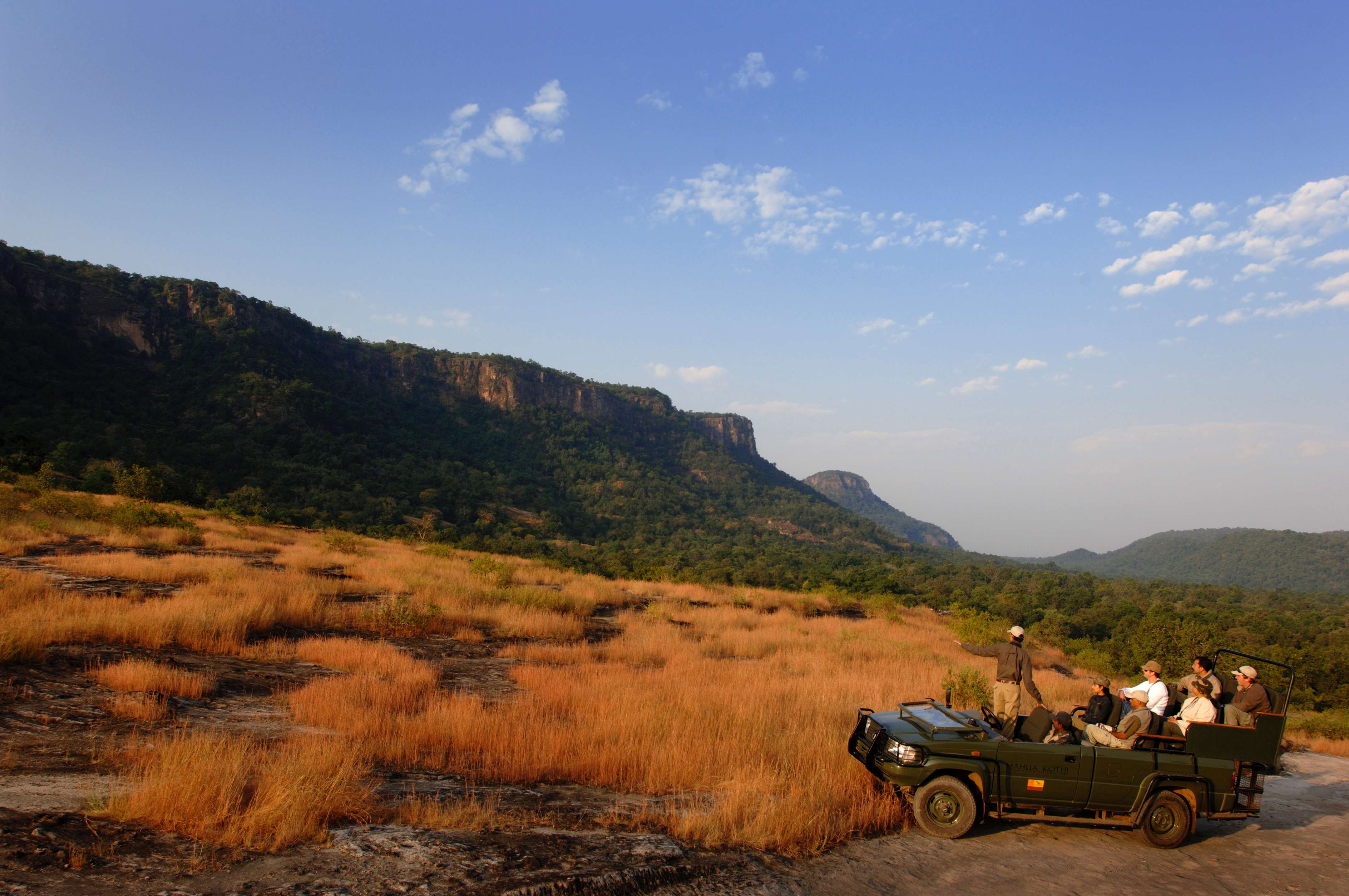
“The tigers in Bandhavgarh are well protected but there is little space for them outside the park to live safely,” says Theo. “Inside these successful reserves, with good prey resources, they breed well, but they need safe areas in which to move between the protected forests. Lack of space is the greatest challenge they face, but I’m still optimistic about their future.”
Named after the highest hill in the park, where an ancient fort sits, Bandhavgarh is home to sloth bears, wild dogs, 10th-century shrines and hand-carved hermit caves. But it is the tigers people come to see — and these big cats exert the same fascination in India today as they have for thousands of years.
A recent explosion in domestic tourism has forced the government to restrict vehicle permits and, as result, the jungle feels deliciously empty — until you see a tiger. An hour after my supplications to the gods, Raj and I came across 20 jeeps huddled around a seemingly empty thicket. A tiger’s iridescent markings become invisible in the undergrowth, ensuring they are almost impossible to spot in repose. Eventually I focused on one giant leg poking out from behind a tree, while the other hung lazily over a branch. The rest of the tiger’s head and body was obscured, except for when he occasionally sat up to an audience of awe-struck sapiens before flopping back to sleep.
Raj and I admired these admittedly very large paws for a while and then drove slowly towards the lush inner forests of the park, where a vine-strewn 10th century temple to Vishnu houses hundreds of monkeys. We stopped for peacocks standing on low-hanging branches, their feathers draping to the ground like an Alexander McQueen dress, giant bison-like gaur, and bald-headed vultures drying the blood off their wings.
Then, as we turned a sharp corner, we saw a single tiger standing stock still in the middle of the road. Despite the two-tonne jeep, I felt fear flood through me — an emotion even Theo is familiar with. “There was this male tiger who was rarely sighted in the bit of park where we filmed but if he was in a bad mood he would snarl at us as he walked by,” he said. “The look of a snarling tiger goes right through you; it’s a hugely primeval feeling.”
This one was female, but all tigers can get aggressive if they aren’t immediately given right of way and, as she walked towards us, Raj reversed perilously down a hairpin bend. Her yellow eyes were trained on us as she padded forward, her teeth slightly bared. Maybe I had prayed too fervently at the temple that morning?
Eventually, with a toss of her head, the tigress turned towards a thicket of trees and almost instantly vanished. The entire encounter had taken less than a minute. It is difficult to describe how beautiful she was without reaching for trite superlatives, but being alone in the jungle with this vivid, powerful creature made me feel extraordinarily privileged.
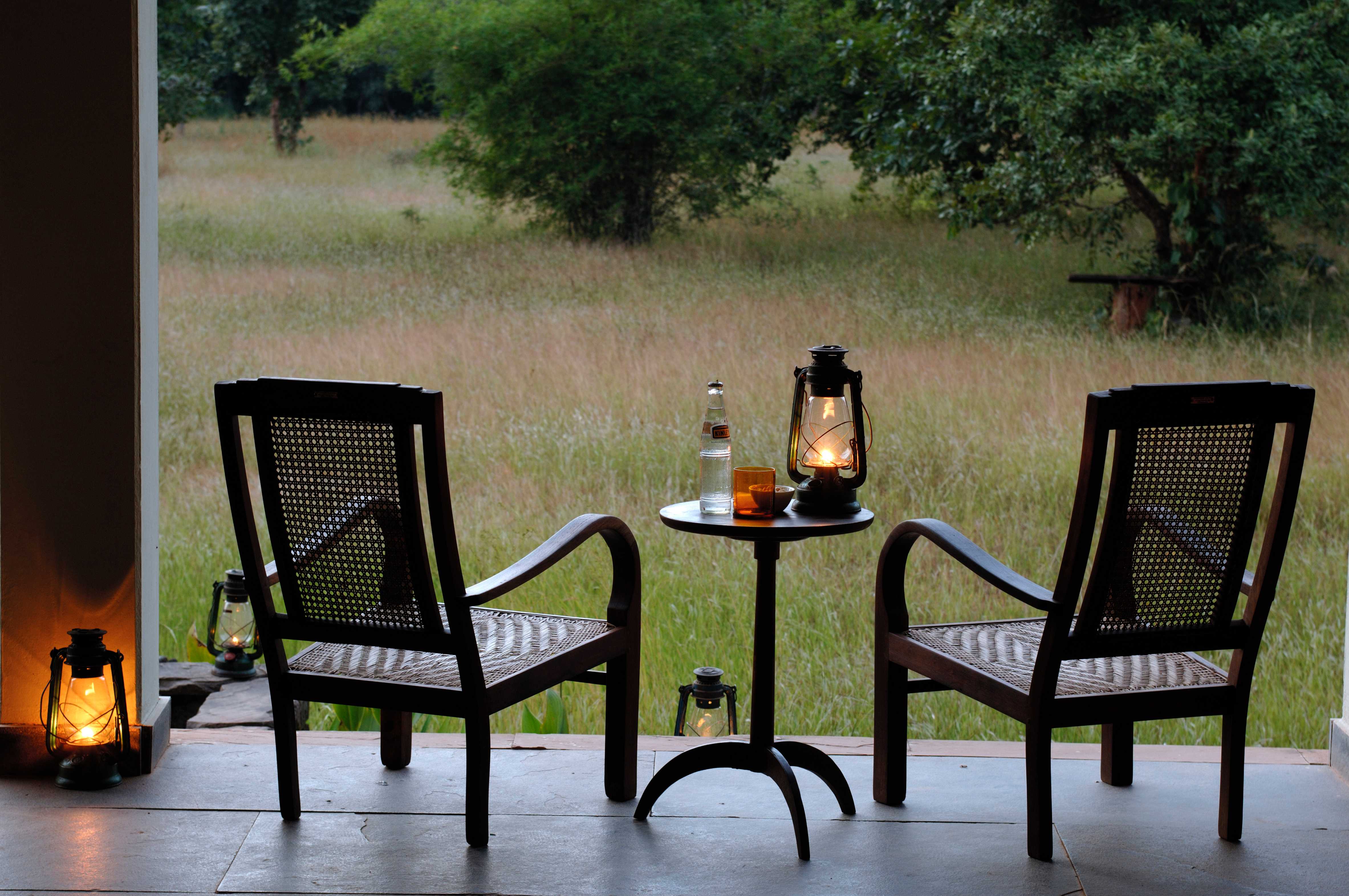
My nights were spent in a luxurious Taj Safari lodge on the banks of the park. Its expansive baked-mud veranda looks out to the yellow plain and, each morning, I watched pairs of mating jackals and the occasional jungle cat. The 12 suites are designed to resemble traditional village huts from the outside and are deliciously comfortable inside. After the evening safari, I would come back to a scented bath covered in lotus flowers and a bed big enough for four.
One day and two brief, but thrilling, tiger sightings later, I left Banhavgarh for Kanha National Park, which is a six-hour drive away through the sun-drenched villages, snaking rivers and barren-looking fossil parks of eastern Madhya Pradesh. Kanha is one of the best-known and oldest of India’s parks; the remaining 1,000-square-kilometre slice of the once-vast central Indian forests. It harbours herds of gaur, spotted deer and blackbuck, and their adversaries: wild dogs, leopards and, of course, tigers.
Kanha has 108 tigers to Bandhavgarh’s 80, but its forest is denser, meaning tiger sightings are fewer but often better, as the animals use the dirt tracks to pad down to the water. Although, as with all wildlife encounters, your fate rests in the hands of lady luck and the skill of your guide.
In that respect, the tiger gods had blessed me twice. Phalgun Patel was born in a nature reserve in Bangalore and is one of the most knowledgeable naturalists I have ever driven with. He works at Banjaar Tola, Taj’s beautiful river-front camp in Kanha, where my plush tented bedroom opened onto a dark-wood balcony. From my chair, I could watch tribal women wash their hair in the water, and spotted deer teeter up for a drink.
“Tiger poaching is less of a problem than it once was, but their skins and bones are still being smuggled to China and Vietnam,” explained Phalgun, during one of our drives “But it is the lack of space that is killing young adult males, as they have no territory to take. Corridors between the parks will solve this, but it is a major project we have to undertake.”
When it comes to the natural world, humanity hasn’t done much to be proud of. But having dinner with this passionate conservationist in a park still ruled by tigers, I felt there was still hope for the future. “Most of our visitors are Indian,” said Phalgun. “They come expecting a zoo, but they are blown away by the beauty of the tigers and the jungle, and this awareness is the best chance the tigers have.”
On my last evening in India, Phalgun and I sat alone on a hilltop, quietly admiring a minivet bird’s iridescent pill-box-red coat. It was early March, a month when the heat of the day dissolves the minute the sun sets, and as I was reaching for my scarf, a blood-curdling roar rang out through the jungle. Then silence, followed by another deeper, loader roar and a hurried exclamation of alarm calls.
Phalgun listened and edged us around a corner, which is when a hulking, 240kg male tiger lolloped through the undergrowth and stood silently in front of us. He breathed slowly through a mouth of gleaming fangs and shook the white ruff that framed his face. His extraordinary coat rippled as his muscles twitched underneath. I have spent years travelling around Africa and Asia for work, and rarely have I found myself reaching for the tissues, but, as I watched him silently pad away from us, my eyes welled with tears.
Yes, tigers play hard to get. But, spend four days in the jungle and you should see one. And when you do, it will be one of those rare travel experiences that is so magnificent, no photograph or adjective will ever quite capture it. Just don’t forget to ask those capricious tiger gods for their blessing first.
This article originally appeared in Billionaire's Earth Issue, September 2019. To subscribe contact




